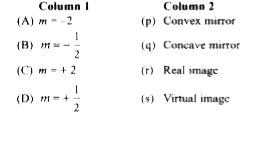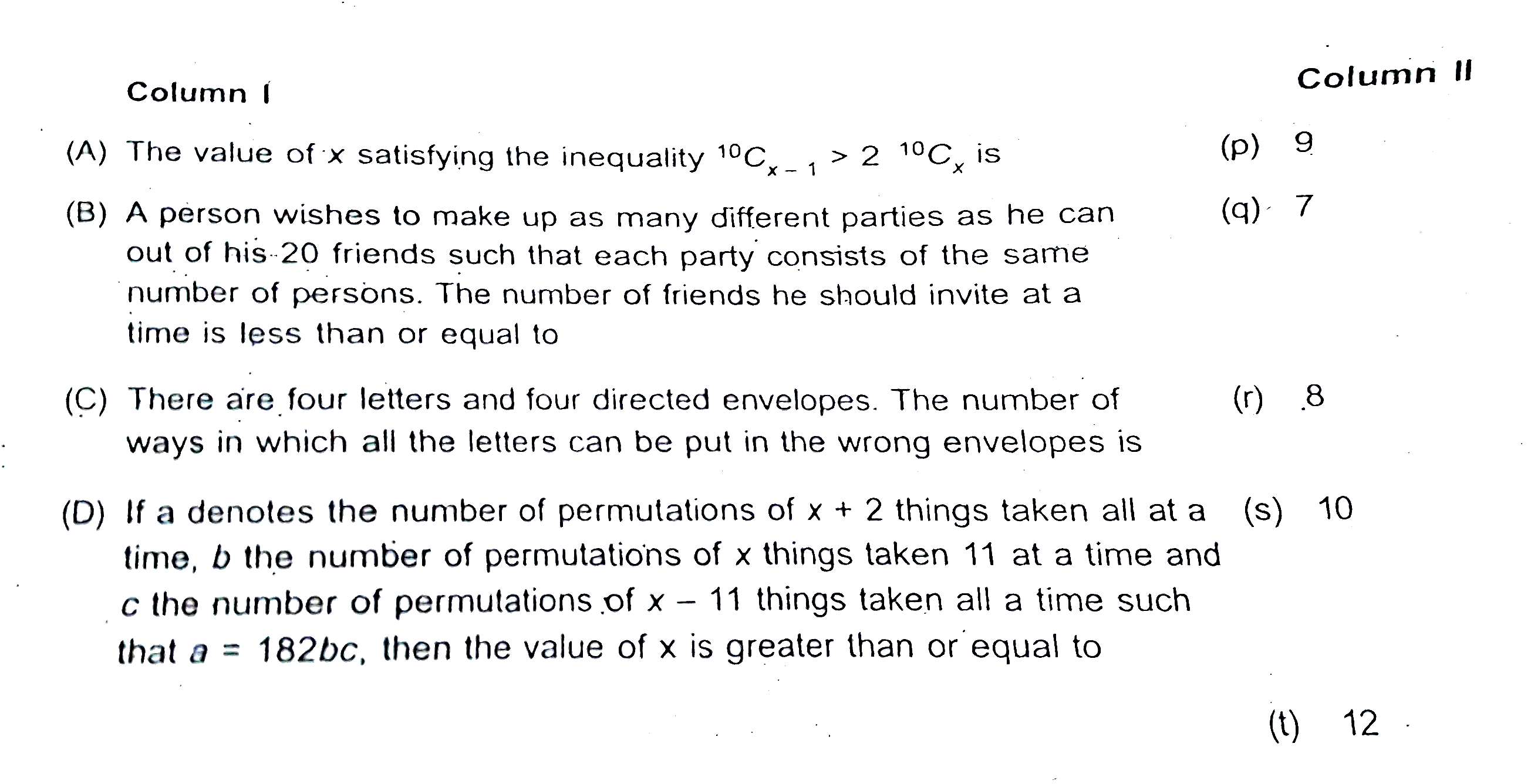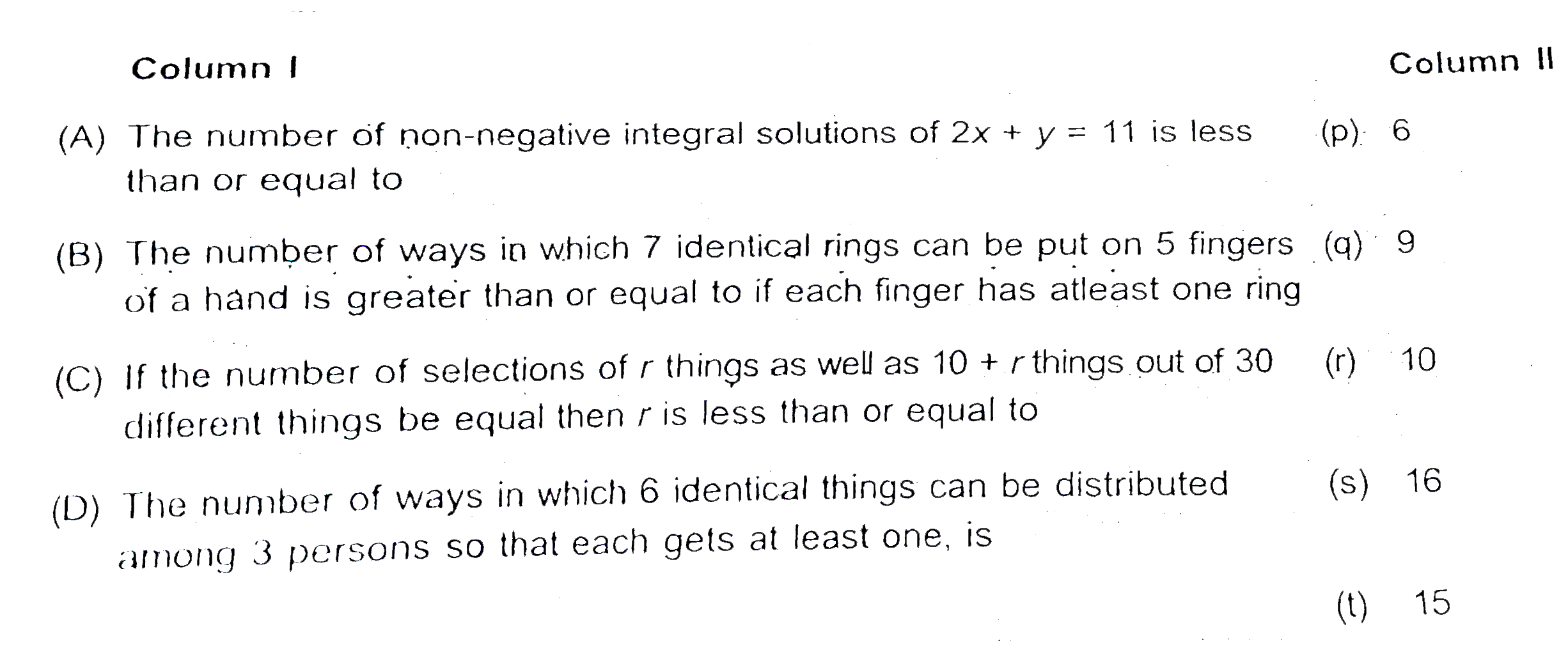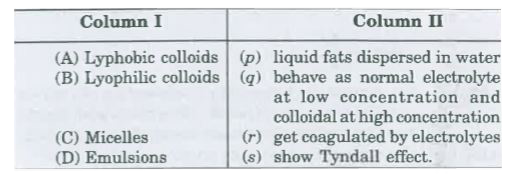Match the corresponding entries of Column I with Column II . [Where, m is the magnification produced by the mirror]
![Match the corresponding entries of Column I with Column II . [Where, m is the magnification produced by the mirror]](https://d10lpgp6xz60nq.cloudfront.net/physics_images/ARH_EGN_PRG_PHY_C06_E02_006_Q01.png)
A
A→aandc,B→aandd,C→aandb,D→candd
B
A→aandd,B→bandc,C→bandd,D→dandc
C
A→candd,B→bandc,C→bandc,D→aandd
D
A→bandc,B→bandc,C→bandd,D→aandd
Text Solution
The correct Answer is:D
A concave mirror forms real and virtual images, whose magnification can be negative or positive depending upon the position of the object. If object is placed between focus and pole, then the image obtained will be virtual and its magnification will be positive. In all other cases, concave mirror forms real images whose magnification will be negative. A convex mirror always forms virtual image whose magnification will always be positive.
|
Topper's Solved these Questions
- RAY OPTICSBOOK - MHTCET PREVIOUS YEAR PAPERS AND PRACTICE PAPERSCHAPTER - RAY OPTICSEXERCISE - EXERCISE 1 (TOPICAL PROBLEMS)
48 Videos
- PRACTICE SET 24BOOK - MHTCET PREVIOUS YEAR PAPERS AND PRACTICE PAPERSCHAPTER - PRACTICE SET 24EXERCISE - Paper 1 (Physics and Chemistry)
50 Videos
- REFRACTION OF LIGHTBOOK - MHTCET PREVIOUS YEAR PAPERS AND PRACTICE PAPERSCHAPTER - REFRACTION OF LIGHTEXERCISE - Exercise 2
25 Videos
Similar Questions
Knowledge Check
Match the corresponding entries of column 1 with column 2. [where m is the magnification produced by the mirror

 A(a)B(b)C(c)D(d)
A(a)B(b)C(c)D(d)Match the corresponding entries of column 1 with column 2. [Where m is the magnification produced by the mirror.
Column 1Column 2(A)m=−2(a) Convex mirror(B)m=−12(b) Concave(C)m=+2(c) Real image(D)m=+12(d) Virtual imageAA→aandc,B→aandd,C→aandb,D→canddBA→aandd,B→bandc,C→bandd,D→bandcCA→candd,B→bandd,C→bandc,D→aanddDA→bandc,B→bandc,C→bandd,D→aandd
Match the entries of Column I with those of Column-II

View SolutionMatch the entries of Column I with those of Column-II

View SolutionMatch the entries of Column I with those of Column-II

View SolutionMatch the entries of Column I with those of Column-II

View SolutionMatch the entries of Column I with appropriate entries in Column II.

View SolutionMatch the entry in colum-I with the entry in column-II

View Solution
